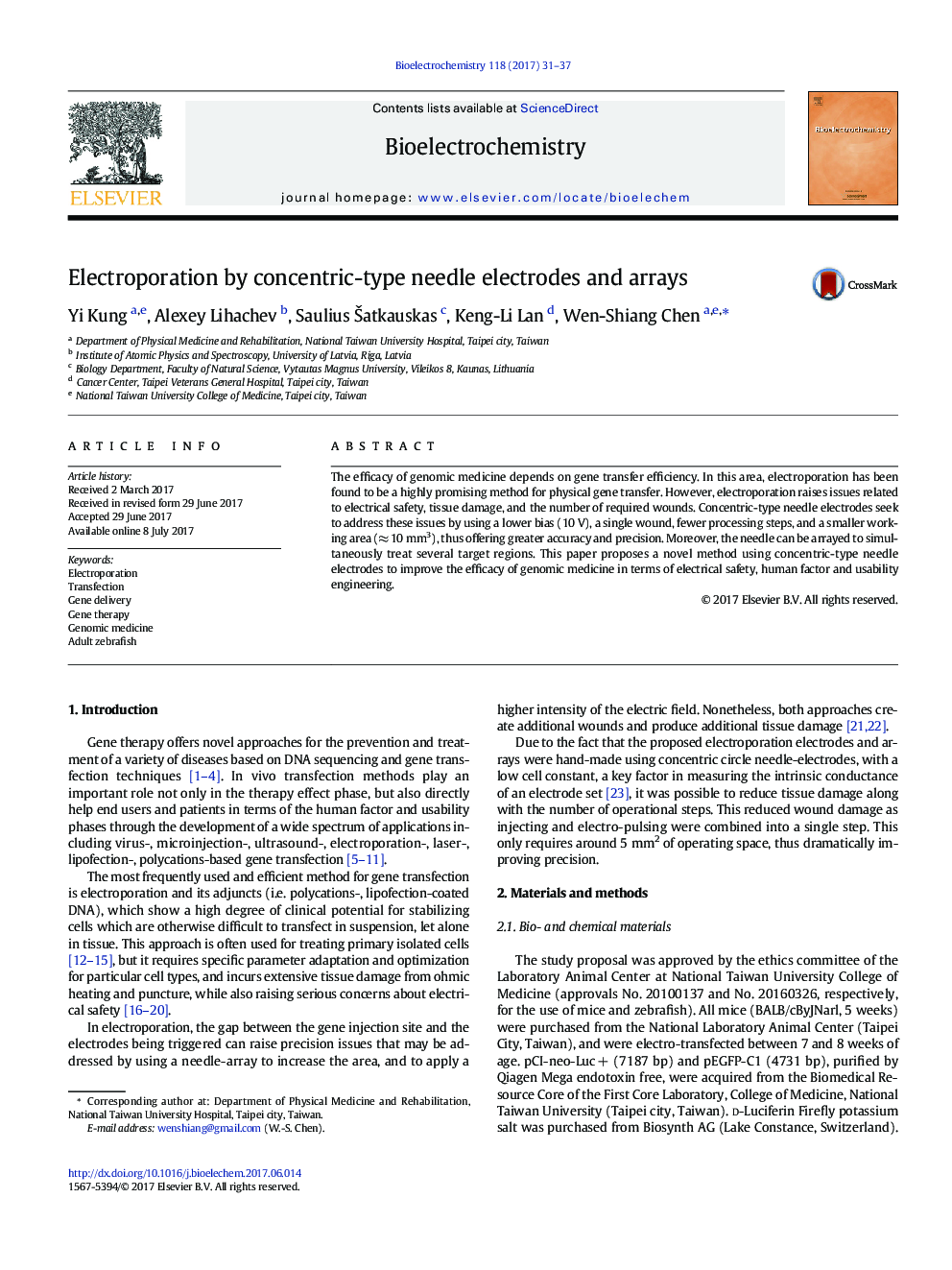| Article ID | Journal | Published Year | Pages | File Type |
|---|---|---|---|---|
| 5144977 | Bioelectrochemistry | 2017 | 7 Pages |
â¢Handmade concentric-type needle electrodes and arrays produced for in-vivo electroporation.â¢Electro-transfection achieved under lower bias (10 V) and smaller working area (10 mm3).â¢Electro-transfection effected in the brain of zebrafish.â¢Lesser tissue damage and smaller wounds produced.
The efficacy of genomic medicine depends on gene transfer efficiency. In this area, electroporation has been found to be a highly promising method for physical gene transfer. However, electroporation raises issues related to electrical safety, tissue damage, and the number of required wounds. Concentric-type needle electrodes seek to address these issues by using a lower bias (10 V), a single wound, fewer processing steps, and a smaller working area (â 10 mm3), thus offering greater accuracy and precision. Moreover, the needle can be arrayed to simultaneously treat several target regions. This paper proposes a novel method using concentric-type needle electrodes to improve the efficacy of genomic medicine in terms of electrical safety, human factor and usability engineering.
